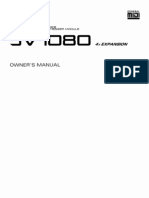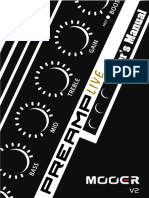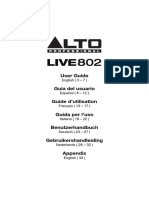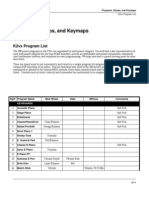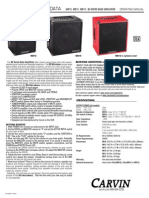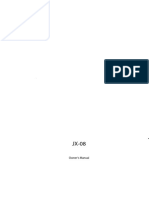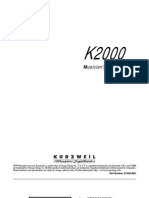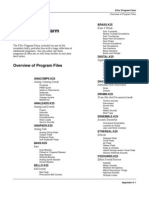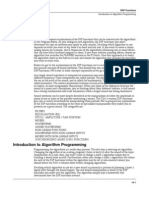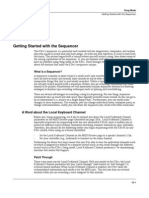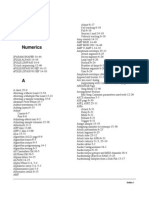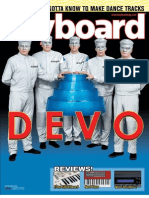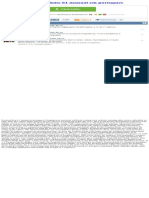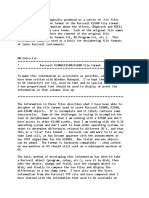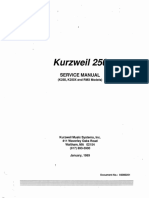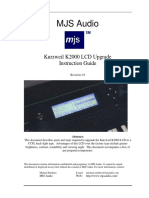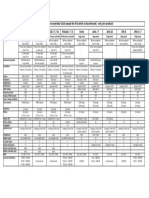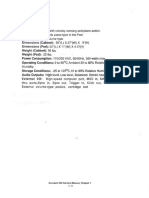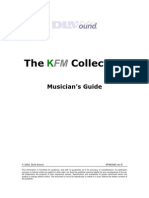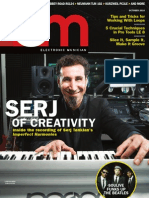Introduction
Overview of the K2vx
Chapter 1
Introduction
Welcome!
Congratulations, and thanks for purchasing the Kurzweil/Young Chang K2vx! YouÕve got your
hands on an extremely capable musical instrument packed with great acoustic, electric, and
synth soundsÑcombined with some of the most advanced synthesis features available, which
you can use to create almost any sound imaginable.
Overview of the K2vx
The K2vx has been designed to be a versatile instrument both for performance, and for multi-
timbral sequencing and recording. Its Variable Architecture Synthesis Technology lets you
build sounds from realistic instrumental samples and sampled synth waveformsÑthen modify
the nature of those sounds through a dazzling array of digital signal processing (DSP)
functions. The K2vx also generates its own synth waveforms, which can be combined with the
samples or used on their own. The K2vx packs 8 Megabytes of on-board sound ROM, and you
can load samples from disk into optional sample RAM.
Before we get into explaining Variable Architecture Synthesis, here are a few of the features that
by themselves make the K2vx an impressive stage and studio machine. ItÕs fully multi-
timbralÑdifferent programs can be played on each MIDI channel. ItÕs 48-note polyphonic, for a
full sound no matter how many chords you play. ThereÕs an on-board digital effects processor,
providing up to four simultaneous effects, including realtime effects control, internally or via
MIDI.
In addition to the standard stereo audio output pair, there are eight separate outputs that can be
conÞgured as stereo pairs, or as individual mono outputs. You can also use the separate
outputs as insert points for outboard gear.
The K2vx offers eight SIMM sockets (single, in-line memory modules) so you can add optional
sample RAM, where you can store samples that youÕve loaded from disk. You can add up to
128 megabytes of sample RAM! (Sample RAM is not battery-backed, so RAM samples are
erased from memory when you power down.)
For ofßine storage, thereÕs also a ßoppy drive and two SCSI ports, so you can store Þles on
ßoppies or on an external hard disk or load them from a CD-ROM drive. The two SCSI ports
make it easy to chain multiple SCSI devices together. ThereÕs also provision for an internal SCSI
hard disk. YouÕll Þnd all this storage potential extremely useful for saving and loading samples,
which can be transferred to and from the K2vx using the standard MIDI sample transfer
format, or the new, faster, parallel SMDI sample transfer format (SCSI Musical Data
Interchange). See the Reference Guide for information about MIDI and SMDI sample transfers.
The K2vxÕs battery-backed RAM will store about 400 of your own programs, or 30,000 notes
recorded in the sequencer. This sequencer (Song mode) lets you play back MIDI type 0
sequences, record and play back your own songs, and record multi-timbral sequences received
via MIDI. For more onboard storage you can add the P/RAM option, which will increase your
battery-backed RAM to about 1280K, enough to store hundreds of additional programs, setups,
songs, and other objects.
The Local Keyboard Channel feature enables you to use the K2vxÕs tri-zone setups even if your
MIDI controller can transmit on only one channel. The K2vx will also rechannelize incoming
1-1
�Introduction
How to use this manual
MIDI information and send it to its MIDI Out port, enabling you to control additional synths on
three different channels.
An optional sampling feature is available, allowing you to make your own mono or stereo
samples using analog or digital inputs.
And, of course, thereÕs the incomparable Kurzweil sound. The K2vx comes to you with 200
preset factory programs (called patches, presets, voices, etc. on other synths), as well as 100
multi-zone performance setups. Play them straight from the box, tweak them in any number of
ways, or develop your own programs from scratchÑwhich brings us back to the powerful
programming capabilities of the K2vx.
What is VAST?
Variable Architecture Synthesis gives the K2vx its unprecedented ßexibility. While many other
synthesizers offer a Þxed set of DSP tools (typically Þltering, pitch, and amplitude modulation)
the K2vxÕs Variable Architecture lets you arrange a combination of any Þve DSP functions from
a long list of choices. The functions you choose deÞne the type of synthesis you use.
Each layer of every program has its own DSP architecture, what we call an algorithm. Within
each algorithm, you can select from a variety of DSP functions. Each function can be
independently controlled by a variety of sources including LFOs, ASRs, envelopes, a set of
unique programmable functions (FUNs), as well as any MIDI control message. The many
different DSP functions and the wealth of independent control sources give you an extremely
ßexible, truly vast collection of tools for sound creation and modiÞcation.
How the K2vx Works
The K2vx integrates two MIDI-driven components: a sound engine, and a global effects
processor. The sound engine responds to the MIDI events generated by your MIDI controller
and turns them into sounds that are processed within the variable architecture of the
algorithms. The resulting sound can then be routed through the effects processor and to the
MIX or separate audio outputs.
How to use this manual
This manual includes the following:
• how to connect and power up your K2vx, getting around the front panel, and a brief
description of the operating modes.
• basic editing, including the normal operations of each operating mode.
• the advanced programming features that make the K2vx so powerfulÑa number of
familiar synthesis tools and quite a few new ones.
Even if youÕre a complete techie, you should read Chapter 3, User Interface Basics. Here youÕll
get a tour of the K2vxÕs front panel and learn how to navigate through the major functions.
Chapter 4 describes the concept and operation of the K2vxÕs eight operating modes, with a brief
description of each. Chapters 6 through 13 describe each mode in detail, including the editors
contained within them. Chapters 14 through 17 discuss the advanced editing features. Chapter
18 shows you how to use the multiple audio outputs to suit your needs. Chapter 19 is a
programming tutorial, giving you speciÞc examples of many of the K2vxÕs programming
functions. Some are basic, some are advanced. By working through the tutorials, youÕll become
familiar with many synthesis techniques, and youÕll get a Þrst-hand look at how to unleash the
power of the K2vx.
1-2
� Introduction
How to use this manual
When manual text appears in boldface italic (like this), youÕll Þnd it described in the Glossary
in the Reference Guide. Only the Þrst one or two occurrences of these words are highlighted.
The best way to read this manual is with your K2vx in front of you. By trying the examples we
give to illustrate various functions, you can get a quick understanding of the basics, then move
on to the more advanced features.
If you like to Þgure out your equipment for yourself, and normally use manuals only as
reference sources, youÕll probably get the most use out of the Reference Guide that accompanies
this manual, which contains brief descriptions of the K2vxÕs major operating features, and all
sorts of useful listsÑprograms, keymaps, algorithms, effects, control sources, and more. A
glossary and complete speciÞcations for the K2vx are also included in the Reference Guide.
1-3
�Introduction
How to use this manual
1-4










